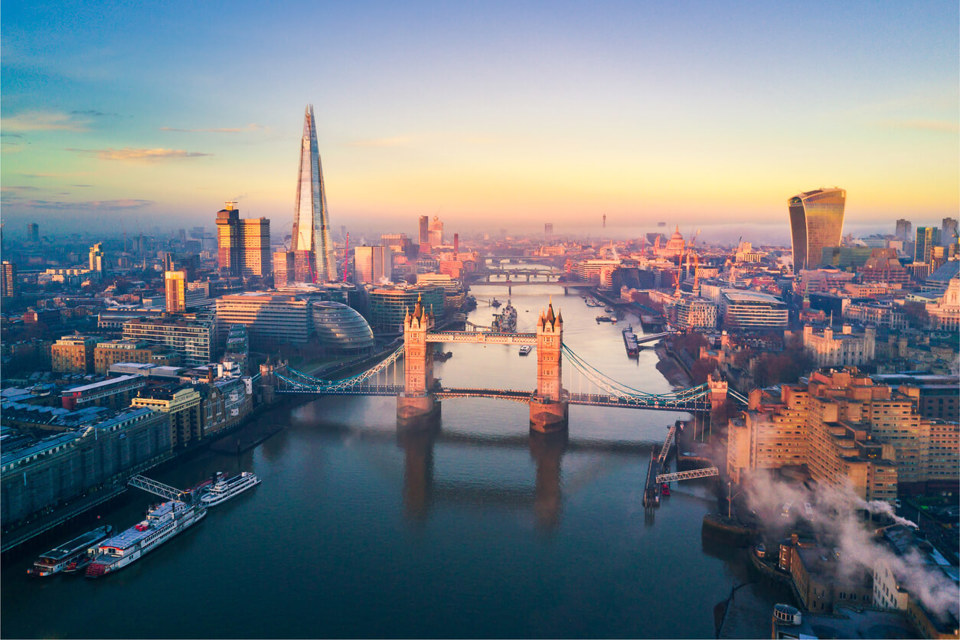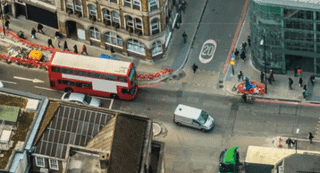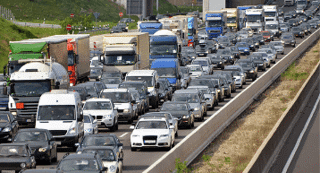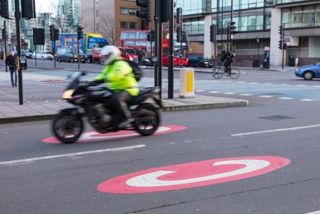The Mayor of London is calling for a “significant” reduction in car use after new data suggested that the cost of congestion to the capital’s economy is £5.1 billion per year or £1,211 per driver.
Public transport use has plummeted by 95% and is currently still significantly behind pre-pandemic levels, with buses at 70% of normal demand and tubes at 55%.
Car use, however, has been more resilient than public transport, and has been the fastest mode of transport to recover to near-normal levels of use after each lockdown, with data showing it has been close to - although not above - pre-pandemic levels for much of the latter half of 2021.
Since 2011, London has experienced a huge increase in the number of miles driven on its roads – rising from 19.1bn miles in 2011 to 22.6bn miles by 2019 – an increase of 3.5bn miles.
Despite Covid-19 lockdowns, 18.7bn miles were driven in 2020.
TomTom data shows that in 2017 an average of 144 hours per year, per driver, were spent sitting in traffic - almost 20 minutes extra for a 30-minute trip during the evening rush hour.
In 2018, this increased to 147 hours, and in 2019, to 149 hours per year. This equates to 6 days and 5 hours in total for an average London driver.
In 2020, traffic was much reduced, but Londoners still spent an extra 15 minutes per 30-minute trip driving because of congestion – 115 hours per year.
Inrix data shows a similar trend, with 148 hours lost a year by drivers on average in 2021. This is estimated to cost the economy £5.1bn a year, or £1,211 per driver, based on an estimate of the average value of earnings that drivers could be making, or the leisure time they could be enjoying, if they were not stuck in traffic. These trends are also reflected in Transport for London’s (TfL) traffic speed data.
The Mayor of London, Sadiq Khan, said: “The cost to both Londoners and the capital cannot be underestimated, with days wasted stuck in traffic, billions lost to the economy and increased road danger and health impacts.
“Most traffic is caused simply by there being too great a demand for limited street space, meaning the only long-term solution can be to significantly reduce car use in favour of greener means of travel.”
Throughout the pandemic, the Mayor and TfL have worked closely with boroughs to change road layouts and ensure there is enough space for people to walk and cycle safely.
The Mayor and TfL argue that these measures are playing a vital role in reducing congestion by enabling people to use ways of getting around that use up less road space, including walking, cycling and public transport.
More than 120km of cycle routes and tens of thousands of square metres of extra pavement space have been delivered at the expense of road space for cars, trucks and vans.
Alex Williams, TfL's director of city planning, said: “Ensuring that people can walk, cycle and use public transport is vital to London’s successful recovery from the pandemic.
“A car led recovery will increase congestion and pollution, threatening London's economy and making the capital a less healthy and sustainable place for everyone.
“Following the successful expansion of the ULEZ scheme, which led to a reduction in trips by older and dirtier vehicles, we’re determined to make sure that clean and reliable public transport plays a central role in supporting Londoners and the wider economy.
“We’ll continue to work closely with local councils and other partners to ensure that people can also walk and cycle safely and easily.”
Nick Bowes, chief executive of think tank Centre for London, says that these latest figures suggest more needs to be done.
“The Congestion Charge, while world-leading when it was first introduced, is outdated and its effectiveness has diminished over time, particularly as it only affects those who drive through our city centre,” he said.
“The Mayor needs to be bold and introduce a simpler, smarter and fairer system of road user charging which replaces both the Congestion Charge and the Ultra-Low Emission Zone.
“Such a scheme would tackle congestion, improve air quality and promote travel by public transport, walking and cycling, by charging drivers by the mile. It could also play a key role in filling the hole in Transport for London’s budget.”
The Mayor’s Transport Strategy commits to tackling congestion, pollution and road danger and delivering greener, more sustainable modes of travel.
All TfL roads in central London are now 20mph, with 29km of roads in total reduced to 20mph in 2020 alone – and the Mayor has committed to making 220km of TfL’s roads 20mph by 2024.
























Login to comment
Comments
No comments have been made yet.